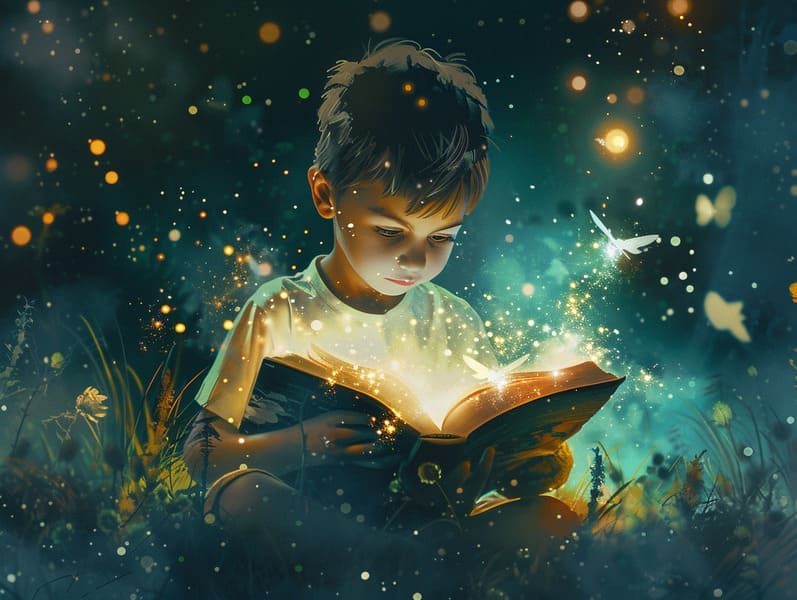Tracing the Heritage of Popular Fairy Tales and the Ageless Loveliness.
Tracing the Heritage of Popular Fairy Tales and the Ageless Loveliness.
Blog Article

Fairy tales for kids have legendary status. These narratives have been relayed from one generation to the next ages before they were ever inscribed. They arose from a variety of civilizations, including Indigenous traditions. They were initially narrated among elders, often carrying themes and messages pertaining to the societal norms and beliefs of the time.
The Brothers Grimm, Jacob and Wilhelm (the Grimm brothers), were among the first to assemble many of these beloved narratives. Their collection, "Grimm's Fables," included tales like "Ashenputtel," "Little Brother and Little Sister," and "Schneewittchen," which have since become hallmarks in the world of children's fairy tales. Similarly, H. C. Andersen's whimsical fairy tales, such as "The Mermaid's Tale," and "The Ugly Duckling," have enchanted hearts worldwide, cementing their place in the pantheon of timeless fairy tales.
Despite their age, fairy tales remain as relevant as ever, especially as bedtime stories for kids. These enchanting tales are now available in different formats, including gorgeously illustrated books, whimsical animations, and digital storybooks.
Their unwavering allure can be connected to several fascinating points:
Vital Lessons: Classic fairy tales often illustrate important moral lessons. Stories like "The Wolf and the Liar" teach the virtue of honesty, while "The Story of the Tortoise and the Hare" show the qualities of resolve and meekness. These tales offer little ones clear distinctions between moral and immoral, shaping their moral compass in a soft yet meaningful way.
Empathy and Awareness: Traditional fairy tales frequently showcase individuals facing trials and tribulations, provoking kids to empathize with their struggles and support their triumphs. For instance, "Beauty and Her Beast" highlights the significance of appreciating inner worth to see the real person of a individual, encouraging empathy and comprehension.
Cultural Perception: Many fairy tales are interwoven with the cultural contexts from which they originated. Delving into these fairy tales can provide fascinating glimpses into different social structures, advancing a sense of international awareness and perception.
Inventiveness and Fantasy: The enchanted elements in ancient fairy tales—enchanted objects—promote children’s fantasy worlds. These stories lead readers to extraordinary realms, invigorating fantastical thinking and a sense of magic that remains a lifetime.
Traditional fairy tales are not only mesmerizing but also didactic. They serve as alluring tools in advancing various mental and emotional abilities in young readers. When classic fairy tales are spoken out loud, they develop speech development by showing new phrases and complicated sentence structures. This practice also advances auditory perception and focus, as kids hang on every word, anticipating to see what happens next.
Furthermore, analyzing the themes and characters of timeless fairy tales can advance evaluative skills and critical thinking. The young are guided to discover patterns, make predictions, and catch on to cause and effect. These explorations also promote children utter their thoughts and feelings, adding to their emotional intelligence.
In today’s information age, the availability of web-based fairy tales has made these fairy tales more obtainable than ever. Digital sites and online apps feature comprehensive collections of timeless fairy tales that can be browsed or played anytime, anywhere. Fairy tales voiced are particularly widespread, offering an delightful method for young ones to appreciate these captivating stories. Read-aloud books and narrated videos lead characters and settings to life, often supported by entrancing melodies and harmonies that intensify the narrative experience.
The timeless appeal of classic fairy tales lies in their ability to adapt to current times while keeping hold of their main lessons. Contemporary updates of these narratives often incorporate more representative protagonists and modern settings, making them best fairy tales to read online understandable to today’s audience. However, the basic principles of daring, warmth, and honesty remain unchanged, continuing to connect with audiences of all ages.
Traditional fairy tales also offer a sense of contentment and familiarity. They impart a ordered narrative with a definite beginning, middle, and end, often winding up with the resolution of conflicts and the triumph of justice over injustice. This steadiness can be solacing for little ones, furnishing a sense of firmness in an unpredictable world.
Old fairy tales continue to bewitch and guide new generations, maintaining their appeal and impact in modern society. As children's bedtime stories, they bequeath a perfect blend of fascination and comprehension, cultivating moral values, empathy, and creativity. The accessibility of digital fairy tales and the well-received status of fairy tales spoken make sure that these classic stories remain obtainable to new generations.
By maintaining and distributing these fairy tales, we continue to cherish the rich tapestry of cultural legacy and cultural heritage. Whether you are seeing a artistically illustrated book, experiencing a cyber library, or listening to an audiobook, the grace of timeless fairy tales is always within reach. These fairy tales highlight of the consistent power of stories and its ability to link us across time and space.
No matter if you are exploring a vibrantly illustrated book, seeing a online library, or listening through an sound book, the captivation of old fairy tales is always within reach.
These stories emphasize of the unfading impact of fairy tales and its ability to bond us across eras and regions, forming a connection that delights and instructs alike.